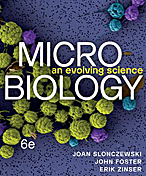Yogurt: Difference between revisions
| Line 24: | Line 24: | ||
The yogurt niche and its environment overlap its similarity between some of the other dairy niches, specifically being the milk niche which is the root of all dairy niches. The making of yogurt is first through the transition of the milk niche. Firstly, yogurt is made from fermented milk. Milk is rich in sugars, more specifically the sugar being lactose. An environment rich in sugars is an environment that microbes love to thrive in; thus, milk is a great feast for microbes. The following are a list of microbes that thrive in milk. | The yogurt niche and its environment overlap its similarity between some of the other dairy niches, specifically being the milk niche which is the root of all dairy niches. The making of yogurt is first through the transition of the milk niche. Firstly, yogurt is made from fermented milk. Milk is rich in sugars, more specifically the sugar being lactose. An environment rich in sugars is an environment that microbes love to thrive in; thus, milk is a great feast for microbes. The following are a list of microbes that thrive in milk. | ||
===Related Microbes Adjacent Communities=== | ===Related Microbes in Adjacent Communities=== | ||
1. Streptococcus lactis | |||
Purpose: Souring | |||
Method: Lactose-lactic acid precipitation | |||
2. Streptococcus bulgaricus | |||
Purpose: Souring | |||
Method: Lactose-lactic acid precipitation | |||
3. Lactobacillus casei | |||
Purpose: Cheese ripening | |||
Method: Controls altermentation. | |||
4. E coil | |||
Purpose: Souring & gassiness | |||
Method: Lactic acid & gases and affects cheese ripening. | |||
5. Bacillus substallis | |||
Purpose: Protecolysis | |||
Method: flavors change. | |||
6. Alkaligenes viscus | |||
Purpose: Ropiness | |||
Method: Ropi milk | |||
7. S Streptococcus liquifiecence | |||
Purpose: Bitter Flavour | |||
Method:Bitter flavour to cream &butter. | |||
8. Bacillus substallis | |||
Purpose: Sweet curdling | |||
Method: Curd formation | |||
9. Streptococcus paracitrovorus | |||
Purpose: Attacks citric acid | |||
Method: Flavors curd. | |||
===Conditions under which the environment changes=== | ===Conditions under which the environment changes=== | ||
Revision as of 02:19, 27 August 2008
Classification
Higher order taxa:
Species:
Introduction of Yogurt Niche
Description of Niche
Location of Microbes
Physical Conditions of Microbes
Other Niches Affecting Microbes in Yogurt
Influence by Adjacent Communities
The yogurt niche and its environment overlap its similarity between some of the other dairy niches, specifically being the milk niche which is the root of all dairy niches. The making of yogurt is first through the transition of the milk niche. Firstly, yogurt is made from fermented milk. Milk is rich in sugars, more specifically the sugar being lactose. An environment rich in sugars is an environment that microbes love to thrive in; thus, milk is a great feast for microbes. The following are a list of microbes that thrive in milk.
Related Microbes in Adjacent Communities
1. Streptococcus lactis
Purpose: Souring
Method: Lactose-lactic acid precipitation
2. Streptococcus bulgaricus
Purpose: Souring
Method: Lactose-lactic acid precipitation
3. Lactobacillus casei
Purpose: Cheese ripening
Method: Controls altermentation.
4. E coil
Purpose: Souring & gassiness
Method: Lactic acid & gases and affects cheese ripening.
5. Bacillus substallis
Purpose: Protecolysis
Method: flavors change.
6. Alkaligenes viscus
Purpose: Ropiness
Method: Ropi milk
7. S Streptococcus liquifiecence
Purpose: Bitter Flavour
Method:Bitter flavour to cream &butter.
8. Bacillus substallis
Purpose: Sweet curdling
Method: Curd formation
9. Streptococcus paracitrovorus
Purpose: Attacks citric acid
Method: Flavors curd.
Conditions under which the environment changes
Microbes Specific to Yogurt
Which microbes are present?
Are there any other non-microbes present?
Do the microbes that are present interact with each other?
Microbe Metabolism
Probiotic
Current Research
References
Edited by [Chung Abbott, Ibukun Osindele, Anusha Sridharan, Jerry Wang], students of Rachel Larsen
